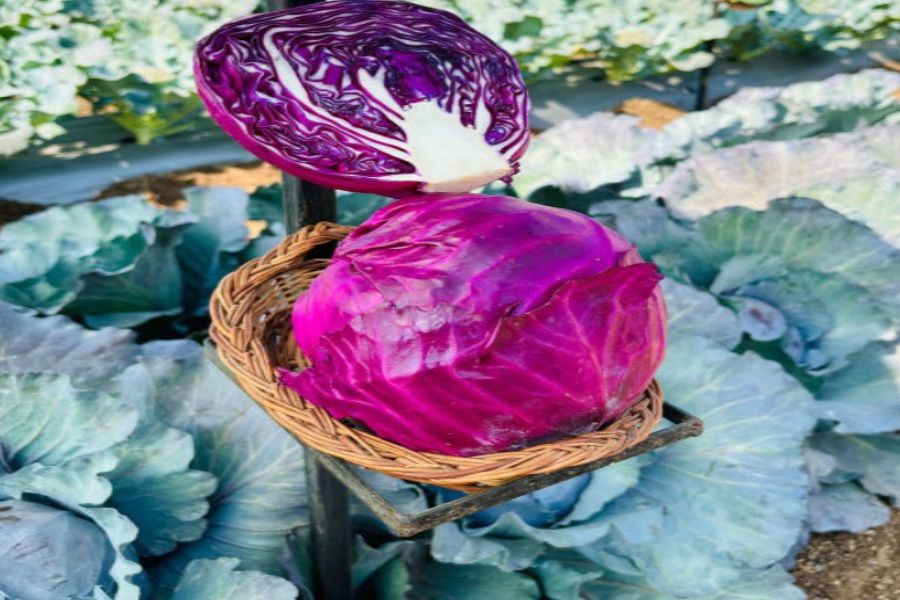Why Red Cabbage? Red cabbage, also known as purple cabbage, is a nutrient-rich vegetable that thrives in cool weather, making it a perfect crop for sustainable farming practices. Rich in vitamin C, vitamin K, and antioxidants, red cabbage is a popular choice for health-conscious consumers. Its stunning color makes it a favorite for salads, slaws, and even pickles, which further boosts its marketability. Benefits of Red Cabbage Farming High Demand in Local and International Markets: With the growing focus on health-conscious eating, red cabbage is seeing increasing demand in both local markets and globally. Its vibrant color and crunchy texture make it an attractive choice for consumers. Low Input Cost: Compared to other vegetables, red cabbage requires relatively low investment in terms of fertilizers and pesticides. It grows well in organic farming systems, making it an excellent crop for farmers looking to reduce their environmental footprint. How to Grow Red Cabbage Soil Preparation: Red cabbage thrives in well-drained, loamy soil rich in organic matter. Ensure the soil is slightly acidic, with a pH between 6.0 and 6.8. Before planting, enrich the soil with compost or well-rotted manure. Planting: Start red cabbage seeds indoors 6–8 weeks before the last expected frost. Once seedlings are ready, transplant them to the field when the soil temperature reaches at least 50°F (10°C). Space the plants 12–18 inches apart to allow ample room for growth. Watering and Care: Consistent moisture is essential for healthy growth. Water the plants deeply, ensuring the soil remains moist but not waterlogged. Apply mulch around the base to help retain moisture and suppress weeds. Pest Management: Keep an eye out for common pests such as aphids, cabbage worms, and slugs. Natural predators like ladybugs and beneficial nematodes can help control pest populations organically. Harvesting: Red cabbage is typically ready for harvest in 70-80 days. Look for tightly packed heads and a deep, vibrant color. Harvest the cabbage heads when they are firm and full-grown, cutting them at the base of the stem. Red Cabbage in the Market With the demand for organic produce rising, red cabbage is becoming an increasingly popular crop for farmers looking to enter the health food market. In addition to its use in fresh salads and slaws, red cabbage is also in demand for fermentation (such as sauerkraut) and juice production, making it a versatile crop with multiple revenue streams.
